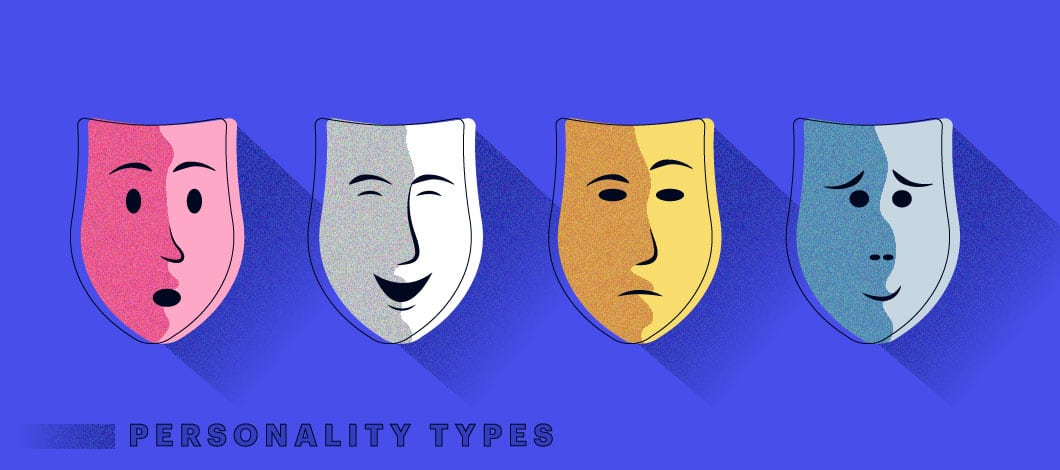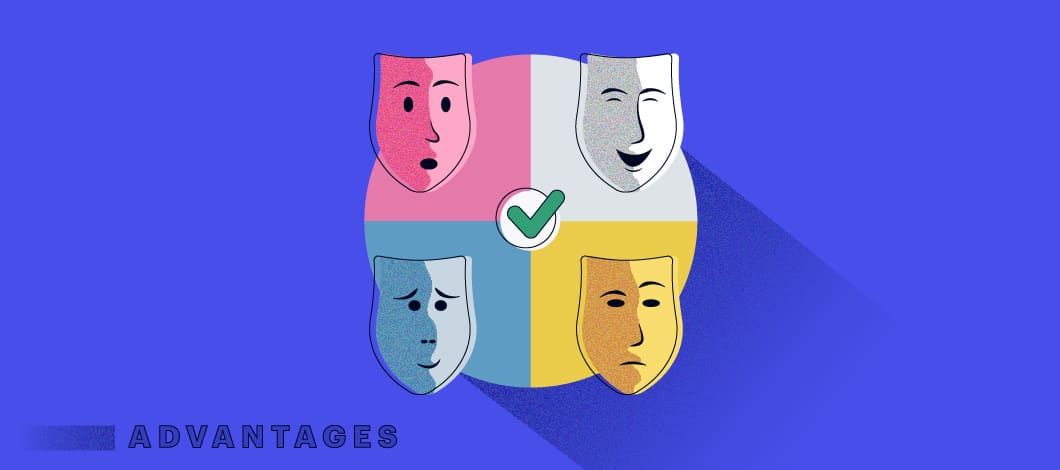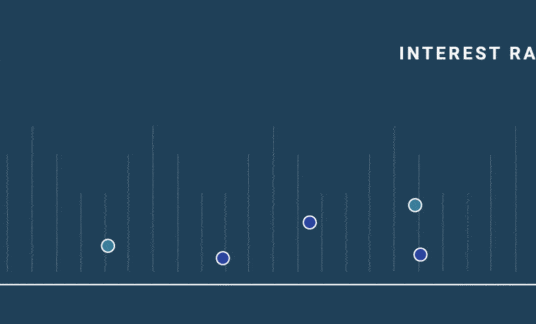Thinkers versus feelers, extroverts versus introverts, optimists versus pessimists. The list can go on.
Are too many personality types in the workplace making it difficult to know how to lead your team effectively? If you’re finding it challenging to interact with varying personas, much less manage them, here are a few tips to help turn things around.
We’re breaking down 7 ways you can effectively lead your diverse team toward success as well as revealing the various personality types you might encounter.
Assessing Personality Types in the Workplace
The first step toward understanding how to manage different personalities in your workplace is to realize your employees’ personality types.
Laura Prisc of Conscious Leadership Partners offers this advice for managing different work personality types: “Savvy leaders recognize each of the members of their team and organization bring unique contributions, skills, strengths and styles to the table.”
She goes on to say, “to create the environment in which each can bring his or her best, the leader must get to know, understand and lead them as individuals. One can do this through careful observation and practice over time or do it the faster, easier way: Using proven assessments.”
Prisc tends to use several assessments with clients, including the Kiersey as well as CliftonStrengths which she says “identifies what each person is uniquely hard-wired to contribute and allows the leader to build strengths-based teams, rather than wasting time, effort and energy attempting to fix weaknesses.”
She notes the DiSC is another effective assessment that can be interchanged with the Kiersey or Myers-Briggs Type Indicator. Prisc says these assessments “offer a common language” and “insight into how others think and how they approach life, work and challenges.” She also notes they can help with conflict resolution, team building and engagement.
Additionally, Prisc employs the EQi-2.0 assessment, which “offers a snapshot of an individual’s emotional intelligence – a combination of self-awareness, other awareness and the ability to build and navigate healthy, collaborative relationships.”
“Assessments such as these take the guesswork out of understanding what your people have to offer and how best to engage them at a variety of levels and on a variety of tasks and projects. They are most effective when used as a consistent tool within one’s business and integrated into the daily activities of the organization.”

Understanding Personality Types
Because there are many personality tests available, it can be hard to choose the right one. That said, here are a few popular tools used to understand personalities in teams.
Myers-Briggs Type Indicator
One of the more well-known personality tests is the Myers-Briggs Type Indicator (MBTI). According to the company’s website, 88% of Fortune 500 companies globally use this personality assessment tool, which has been around for more than 70 years.
There are 4 core trait possibilities. For each either/or option, people will find they have a greater inclination toward one or the other:
- Introversion (I) vs. Extroversion (E)
- Sensing (S) vs. Intuition (N)
- Thinking (T) vs. Feeling (F)
- Judging (J) vs. Perceiving (P)
From these 4 core traits, 16 types of personalities can emerge, each with its own title:
- INFP: imaginative, idealists (“Healer”)
- INTJ: analytical, problem-solvers (“Mastermind”)
- INFJ: creative, nurturers (“Counselor”)
- INTP: philosophical, innovators (“Architect”)
- ENFP: passionate, energetic, people lovers (“Champion”)
- ENTJ: strategic, logical, leaders (“Commander”)
- ENTP: curious, clever, innovators (“Visionary”)
- ENFJ: idealists, organizers (“Teacher”)
- ISFJ: practical, compassionate, caring (“Protector”)
- ISFP: cheerful, flexible, spontaneous (“Composer”)
- ISTJ: responsible, organizers (“Inspector”)
- ISTP: observant, mechanical, artisans (“Craftsperson”)
- ESFJ: conscientious, helpers (“Provider”)
- ESFP: vivacious, fun-loving, entertainers (“Performer”)
- ESTJ: hard-working, rule-abiding, methodical (“Supervisor”)
- ESTP: energetic, thrill-seekers (“Dynamo”)
DiSC Personality Types
Diana Lowe, chief executive officer (CEO) of Blue Light Leadership, says the DiSC assessment is the “simplest way to start engaging a person’s emotional intelligence.”
Lowe says DiSC is “a tool that helps us understand a person’s communication energy,” not a personality assessment tool per se.
“What DISC allows a leader or professional to do is to see what ‘language’ that other person speaks and how best to speak that ‘language,’” she says.
DiSC stands for the following:
- Dominance
- Influence
- Steadiness
- Conscientiousness
People can exhibit a combination of traits, with one core trait being predominant. For instance, someone could have a predominantly steady personality with conscientiousness as a secondary trait, or have dominance as the primary trait with influence as the secondary.
The Big 5 Traits
The Big 5 traits, also referred to by the acronym OCEAN, refer to these qualities:
- Openness
- Conscientiousness
- Extroversion
- Agreeableness
- Neuroticism
Instead of an either/or model, this one asserts that individuals exhibit all of these traits, each to a certain degree. For instance, some individuals exhibit more openness than others, rated somewhere in between a sliding scale ranging from “closed” to “open.”

When you’re leading different personalities under this model, you’d consider where an employee’s personality falls along the spectrum. For example, Janelle Owens, the human resources director of Test Prep Insight, says you’d coach someone high on the “agreeableness” factor much differently than someone on the lower end of the scale.
“For employees that fall near the high end, meaning they generally enjoy helping others, feel strong empathy and take a great deal of interest in others and their thoughts, management is fairly easy. These types of individuals are highly perceptive and want to please, so positive reinforcement goes a long way towards building trust and loyalty,” she says.
In regards to difficult personality types in the workplace, Owens shares this advice: Employees low on the agreeableness scale (e.g., manipulative, take little interest in others) must be watched over closely and more actively managed.
The best method of management for these individuals is to “find the instances where they do something for a team member, even if small, and make a big deal of it,” she says. “Praise them for their help and point out how much it meant.”
-
Building on the OCEAN Model
Another personality model named HEXACO builds on the OCEAN, or Big 5 traits, model. It takes into account the following:
- Honesty-humility
- Emotionality
- Extroversion
- Agreeableness
- Conscientiousness
- Openness to experience
7 Personality Management Strategies
How can you successfully lead a team with diverse dispositions and tendencies? Here are a few personality management techniques you can use in the workplace.
1. Use the 3 F’s
Nick Shackelford, managing partner of Structured Agency, offers this advice: “When managing various personality types at work, you want to ensure everyone feels secure enough to be themselves while shaping an environment where respect is paramount.”
Shackelford shares the importance of establishing what he calls the three F’s:
- Follow-through
- Feedback
- Frequent correspondence
The goal is to “mitigate underlying issues before they permeate and assess each person for the individual they are and the work they are doing.”
2. Promote Cognitive Diversity
Sean O’Brien, chief marketing officer at Modloft, says: “While most people think in terms of age, gender and ethnicity when it comes to fostering diversity among employees, cognitive diversity is the inclusion of people who process and analyze information differently, have differing perspectives and excel at various skills.”
“By hiring diverse thinkers and people with unique personalities, we’re creating teams that really bring it to the table when we’re brainstorming new products,” he says. “They also attack challenges from various angles and come up with multiple solutions that fit varying situations.”
“And because we’re not trying to get our employees to ’think like us,’ we’re letting them be themselves, which also fosters their personal and professional growth,” O’Brien says.
3. Emphasize Strengths
Brian Donovan, CEO of Timeshatter, says, “To effectively manage different personality types, you have to emphasize individual strengths instead of trying to change your employees.”
“You cannot change someone’s personality, but you can find positives in it,” says Donovan.
“For example, an employee who is more spontaneous and imaginative may be helpful in idea pitching and creative measures, while an employee who is more reserved and practical may really help a project come to completion successfully and on time,” he says. “While these two employees vary quite differently in their openness to experience, both are able to help the team in a unique way.”
4. Assess Beyond the Assessments
Andre Kazimierski, CEO of Improovy, says it’s important to understand that even people with the same personality type can be very different.
“Learn your employees’ individual strengths and ways of working even more so than just their personality type,” says Kazimierski.
“Understanding personality types can give you a basic idea about how a person functions in the workplace, but it is only a starting point and shouldn’t be what you focus around when managing them,” he adds.
Along the same lines, Michael Moran, owner of recruiting firm Green Lion Search Group, offers this advice: “Don’t get too bogged down in trying to find the right label for each member of your team. Personality types are just a guideline to help gain more insights into how others think.”
5. Empathize and Listen
Mike Dragan, chief operating officer of Oveit, says, “Compassion can help you not only understand people better, but it can also help you design solutions and approaches that meet the motivational and emotional needs of your team members.”
Indeed, trying to understand the points of view your employees have can go a long way toward improving workplace performance. Interestingly, empathetic leaders are viewed as better performers by their own managers, according to the Center for Creative Leadership.
6. Avoid Preconceptions
Moran adds that managers should be cautious of letting stereotypes or preconceptions about different personality traits impact their decision making.
For example, “Someone who’s very agreeable or empathetic can still be ambitious and competitive, while someone who’s more callous or analytical can still be kind and helpful,” he says.
Moran adds, “Putting too much stock in personality types can lead to you putting employees in certain roles based on assumptions rather than seeing their individual strengths and abilities.”
7. Think Ahead
“It is important to not only play to your employee’s strength, but also enable room for growth,” says Patti Naiser, CEO of Senior Home Transitions.
“Just because someone is not good at a task does not mean they cannot grow.” she says.
“Personality is fluid; you don’t have to fit in one box or even be confined to the same box forever. The best manager is one who ensures growth and productivity from their employees.”

Advantages of Working With Different Personality Types
Every personality has something to offer and many can complement others. As a leader, the key is to recognize each person’s gifts and strengths and utilize them accordingly. Recognize each of the personality types in your circle, including your own, and use the abilities of each person in the best capacity.
These are just a few of the benefits you could experience when you maximize the potential of different personality types in your workplace:
- Diversity
- Better decision making
- Increased efficiency
- Different perspectives
- Balance of strengths and weaknesses










